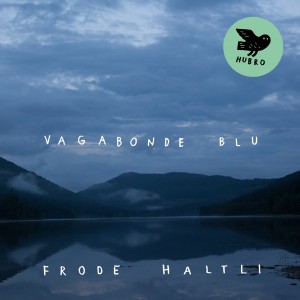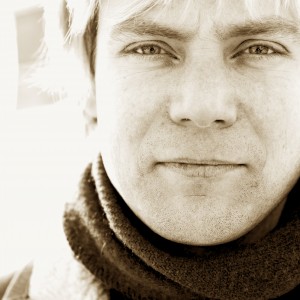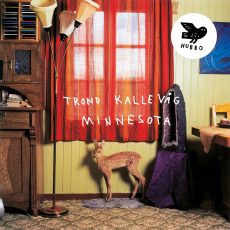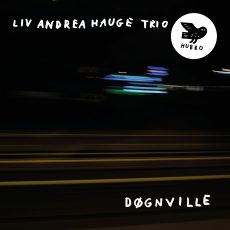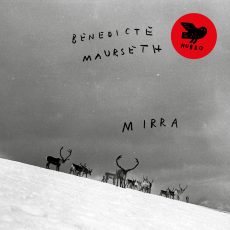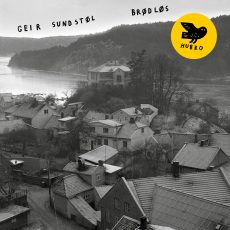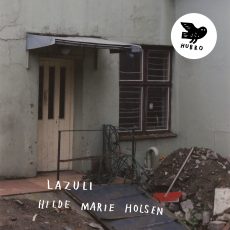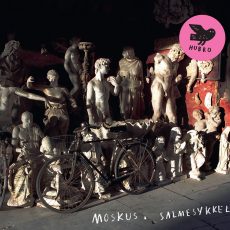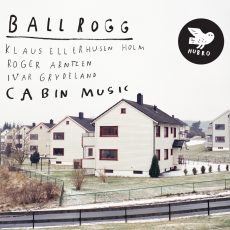Accordionist Frode Haltli is a musician we have admired tremendously for a long time, and we are proud to be releasing an album of his on the HUBRO label. Haltli has a unique ability to communicate, and seems to have a natural talent for swinging between a wide variety of musical styles. He can give life to “black page” music at contemporary music festivals one evening, and play with a bluegrass band the next – without stepping outside his musical comfort zone.
Tomba Emanuelle
In 1926, artist Emanuel Vigeland (1875-1948) built a studio in his garden at Slemdal, Oslo. He intended it to function as a future museum for his sculptures and paintings, but he later bricked up the windows and decided that the building would serve as his own mausoleum. Vigeland’s urn rests above the low entrance door to Tomba Emmanuelle. “When your eyes get used to the darkness you can see the fantastic and grotesque fresco of life that covers the walls and ceiling in the vast, cold room. The massive acoustics produce a long and lively delay covering the entire register of sounds, and as a result it is nearly impossible to carry out a normal conversation. Silence usually prevails, because you instinctively whisper if you want to say something here,” writes Frode Haltli in the album’s cover notes. The hall has previously been used for recordings by Diamanda Galas, Huntsville, Susanne Sundfør and Stian Westerhus, among others.
“As a performer of primarily acoustic music, I always work together with the acoustics and the room. Here the room is such an active partner that it changes my music and my playing radically. I listen and wait, or I play offensively at the room so that it can be difficult to determine whether a sound is coming from the instrument, the echo, a combination of the two, or simply a member of the audience who accidentally touches his jacket. The acoustic performance is re-mixed live by a room.”
The two Italian composers Salvatore Sciarrino (b. 1947) and Aldo Clementi (1925-2011) were both born on Sicily. In Vagabonde blu (1998), Sciarrino undertakes a close study of tiny air and noise sounds, of notes and chords, and of glissandi and pianissimo. In the encounter with Vigeland’s room an extra dimension is added to the composition when the small, isolated events in the music are magnified by the acoustics.
Aldo Clementi writes, with reference to Ein kleines… (1998), that the music should be played like a lullaby. Simple, two-voiced variations of a modal theme are repeated again and again, while the dynamics and tempo are gradually reduced, like a long lullaby that accompanies a child into sleep.
Haltli has been playing Flashing (1985) by Arne Nordheim (1931-2010) since he was a teenager, and recorded the piece on “Arne Nordheim: Complete Accordion Works” (Simax 2012). “One of my principal intentions with that recording was to show the rich opportunities that exist for interpreting Nordheim’s music,” he says. In Tomba Emmanuelle, Nordheim’s solo work Flashing is transformed into a nearly electronic-sounding piece of music. “Surrounded by frescos of life and death, this becomes my homage to Nordheim: his music is hurled out into space, into the universe, into eternity.”
Frode Haltli
Frode Haltli (born 1975 in Norway) began to play the accordion at the age of seven. As a child he played primarily folk music, but he quickly began to approach a broader palette of musical genres and styles. By playing works by composers such as Pietr Fiala, Per Nørgård and Arne Nordheim as well as classical works, he has developed extremely advanced technical skills in addition to a profound understanding of contemporary music. Haltli studied at the Norwegian Academy of Music and later at the Royal Danish Academy of Music, where he completed his studies in 2000. In 2001 he was named Young Soloist of the Year by Concerts Norway, and won second prize in the international “Gaudeamus Interpreters Competition 1999” in the Netherlands.
Haltli’s repertoire includes a wide selection of modern classical works, and he has performed with string orchestras, Sinfoniettas and symphony orchestras all over the world. He has collaborated with the Arditti Quartet and several other string quartets.
His debut record, “Looking on Darkness”, was released by ECM in 2002 to highly favourable reviews. ECM also released the album “Passing Images”, where he played together with trumpet player Arve Henriksen, violist Garth Knox and vocalist Maja Ratkje, and the duo album “Yeraz”, a collaboration with saxophonist Trygve Seim. He played music with roots in the Norwegian folk music tradition in the band Rusk, together with folk singer Unni Løvlid and fiddler Vegar Vårdal, and has in recent years been involved with several projects together with fiddler Gjermund Larsen.
Haltli plays regularly with the trio Poing, along with saxophonist Rolf-Erik Nystrøm and double bass player Håkon Thelin. Together they have commissioned over 60 new works from composers from all over the world, and have released a number of albums.
Frode Haltli teaches accordion at the Norwegian Academy of Music in Oslo.









